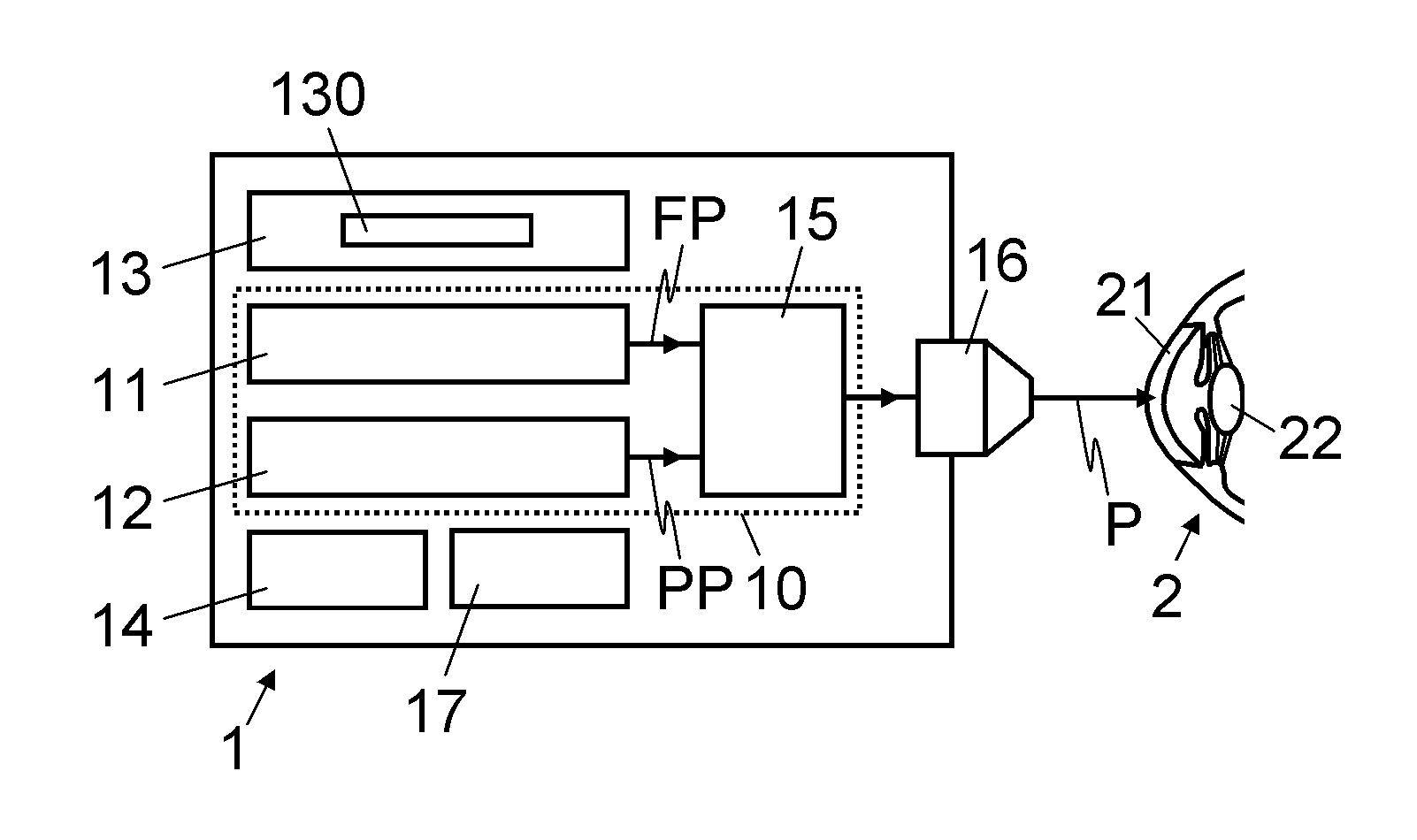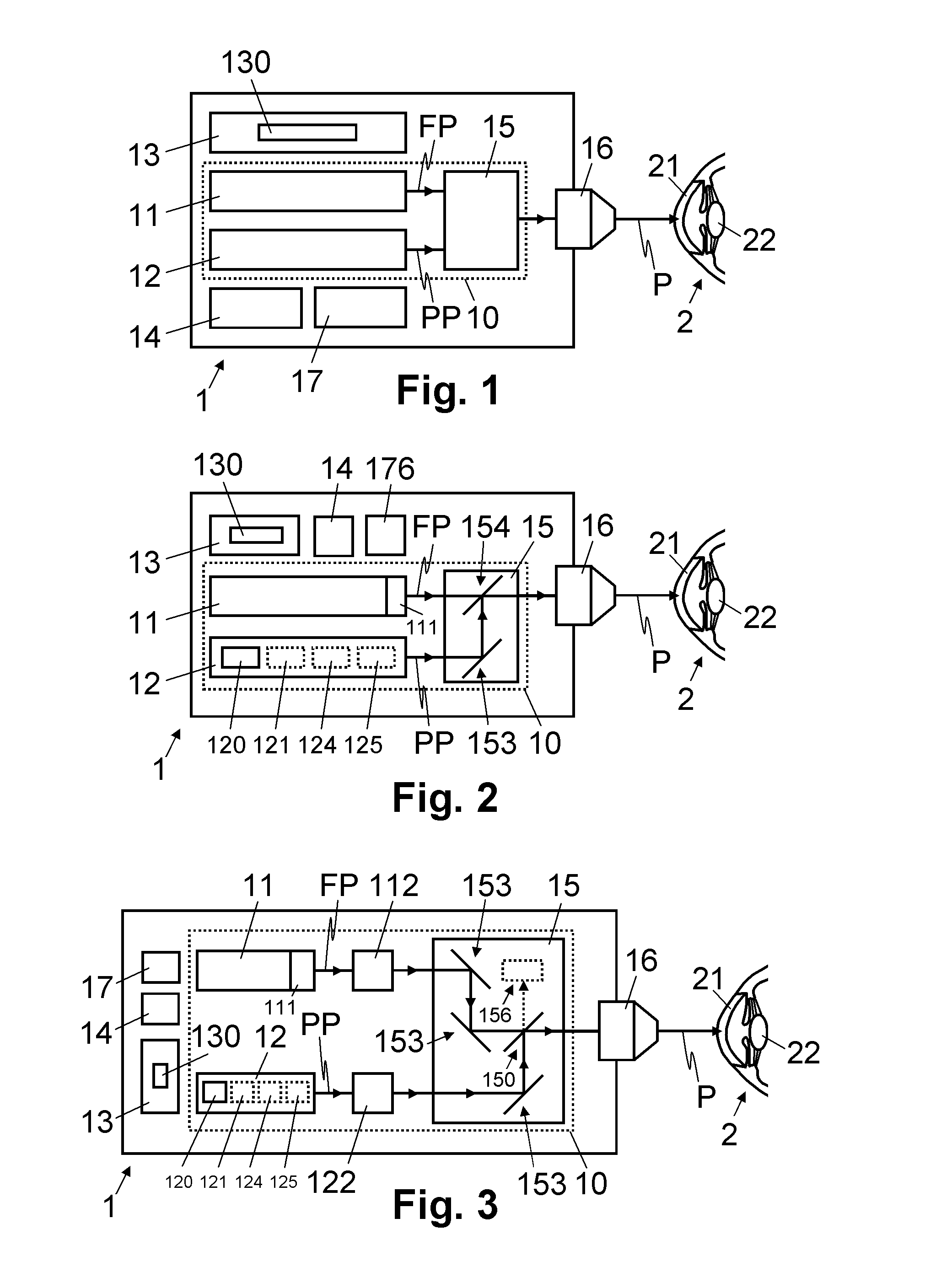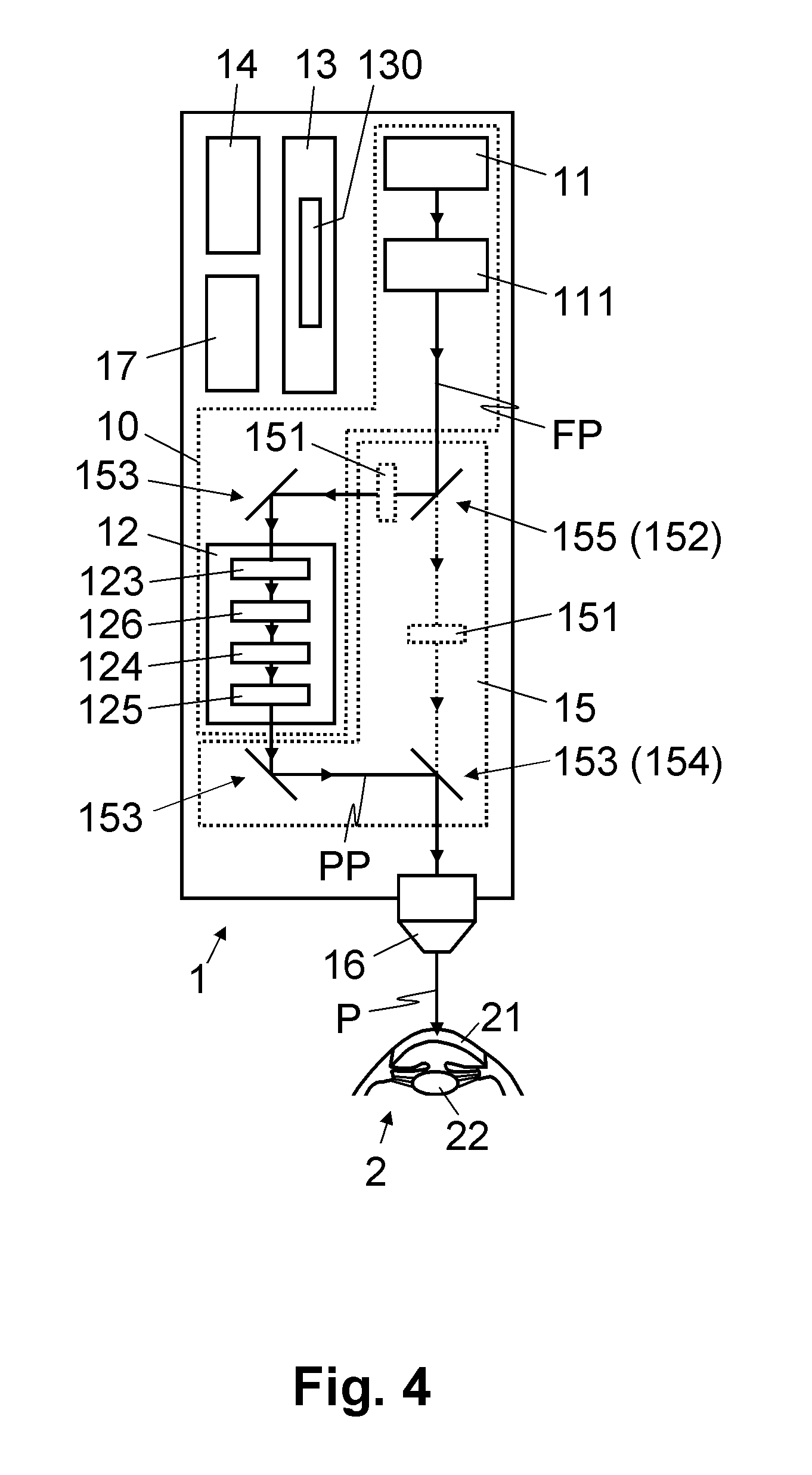Device for treating eye tissue
a technology of eye tissue and laser oscillator, which is applied in the field of eye tissue ophthalmology devices, can solve the problems of limited pulse energy of pure femtosecond laser oscillators, for example, not sufficing to fragment eye tissu
- Summary
- Abstract
- Description
- Claims
- Application Information
AI Technical Summary
Benefits of technology
Problems solved by technology
Method used
Image
Examples
Embodiment Construction
[0035]In FIGS. 1 to 5, reference sign 1 relates to an ophthalmological device for treating tissue in an eye 2, more particularly eye tissue of the cornea 21 and the lens of the eye 22. The ophthalmological device 1 includes a laser pulse generator 10 for generating laser pulses P and a light projector 16 for projecting the laser pulses P onto or into the eye tissue in a focused fashion, more particularly onto or into the cornea 21 and / or the lens of the eye 22.
[0036]As illustrated schematically in FIGS. 1 to 5, the laser pulse generator 10 includes a femtosecond laser oscillator 11 for generating femtosecond laser pulses FP. FIG. 6a schematically illustrates the time profile of a femtosecond laser pulse FP with an amplitude AF. A pulse selector 111 is preferably, but not necessarily, downstream of the femtosecond laser oscillator 11 and designed to transmit the femtosecond laser pulses FP at a specific pulse rate.
[0037]The laser pulse generator 10 moreover includes a picosecond lase...
PUM
 Login to View More
Login to View More Abstract
Description
Claims
Application Information
 Login to View More
Login to View More - R&D
- Intellectual Property
- Life Sciences
- Materials
- Tech Scout
- Unparalleled Data Quality
- Higher Quality Content
- 60% Fewer Hallucinations
Browse by: Latest US Patents, China's latest patents, Technical Efficacy Thesaurus, Application Domain, Technology Topic, Popular Technical Reports.
© 2025 PatSnap. All rights reserved.Legal|Privacy policy|Modern Slavery Act Transparency Statement|Sitemap|About US| Contact US: help@patsnap.com



